Podcast: Play in new window | Download
Subscribe: Apple Podcasts | RSS
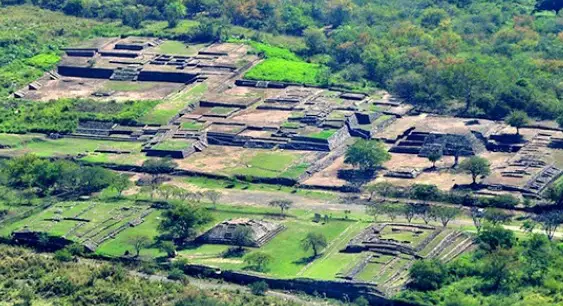 The date was July 23, 1523, and Gonzalo de Sandoval accomplished what he had set out to do. The youngest lieutenant of Hernán Cortés, Sandoval was only 22 years old when he took part in the conquest of the Aztec empire less than 4 years earlier. On that hot July day in 1523, Sandoval established a permanent Spanish presence in what is now the Mexican state of Colima, conquering the Tecos people who were also known as the Colimecas. The young Sandoval was quite the strange sight to the indigenous people he encountered. From the small village of Medellín in Spain’s Extremadura region, the young conquistador stood well over 6 feet tall, had a very pale complexion and grew out a thick, curly blond beard. Sandoval would take 120 Spaniards to found a new city at the site of the indigenous capital of Caxitlán after a swift defeat of the native king named Colimán. Passing through the central part of what is now the state of Colima, young Sandoval noted a gigantic, ruined city that was home to a dozen or so squatters living amid its crumbling stone temples. No one paid any attention to this place until a few centuries later. The locals would call these ruins “El Chanal,” which derives from a local indigenous word chano. A chano is an elf, or duende, with magical powers that lives in rivers and streams. So, essentially, the modern name of this city means “Place of the water elf.”
The date was July 23, 1523, and Gonzalo de Sandoval accomplished what he had set out to do. The youngest lieutenant of Hernán Cortés, Sandoval was only 22 years old when he took part in the conquest of the Aztec empire less than 4 years earlier. On that hot July day in 1523, Sandoval established a permanent Spanish presence in what is now the Mexican state of Colima, conquering the Tecos people who were also known as the Colimecas. The young Sandoval was quite the strange sight to the indigenous people he encountered. From the small village of Medellín in Spain’s Extremadura region, the young conquistador stood well over 6 feet tall, had a very pale complexion and grew out a thick, curly blond beard. Sandoval would take 120 Spaniards to found a new city at the site of the indigenous capital of Caxitlán after a swift defeat of the native king named Colimán. Passing through the central part of what is now the state of Colima, young Sandoval noted a gigantic, ruined city that was home to a dozen or so squatters living amid its crumbling stone temples. No one paid any attention to this place until a few centuries later. The locals would call these ruins “El Chanal,” which derives from a local indigenous word chano. A chano is an elf, or duende, with magical powers that lives in rivers and streams. So, essentially, the modern name of this city means “Place of the water elf.”
The ruins of El Chanal are located just north of the capital of the Mexican state of Colima which is also called Colima. Specifically, the archaeological site for the most part is located on the edges of the modern-day village of El Chanal, a northern rural suburb of the state capital. The 800 or so inhabitants of the village of El Chanal have custodianship over the archaeological zone, although the site is under the protection of Mexico’s National Institute of Anthropology and History or INAH, with guidance coming from the Colima City office. Formal scholarly investigation at the ruins began in 1945 under the direction of Mexican archaeologist Vladimiro Rosado Ojeda. Rosado’s team cleared away much of the topsoil, vegetation and debris of the central part of the ruined city 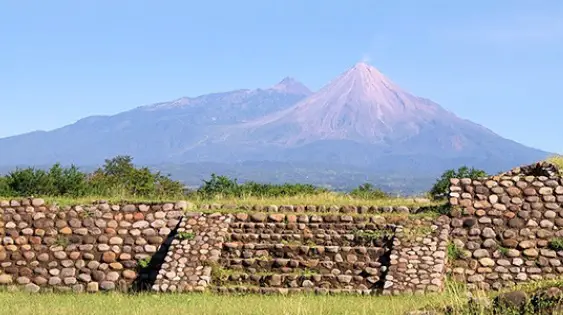 and made an interesting discovery that put El Chanal on the map for ancient Mesoamerican archaeology. Rosado and his group uncovered a pyramid with 6 steps that had a series of 6 engravings per step. Unfortunately, by the time the site generated interest in the mid-1940s it had already been thoroughly looted and many of its buildings had been partially dismantled for their stones which had been used in construction projects going back to the 1700s when the area was under the Spanish occupation. Most of the stones incorporated into the structures at El Chanal come from the Colima River nearby and are thus smooth and somewhat rounded river rock. Researchers now know that El Chanal once extended across the Colima River which flows a few miles west from the core of the ruins. Many archaeologists believe that El Chanal once covered an area of about 120 acres at its height, which would make it the largest pre-Hispanic city in the state of Colima.
and made an interesting discovery that put El Chanal on the map for ancient Mesoamerican archaeology. Rosado and his group uncovered a pyramid with 6 steps that had a series of 6 engravings per step. Unfortunately, by the time the site generated interest in the mid-1940s it had already been thoroughly looted and many of its buildings had been partially dismantled for their stones which had been used in construction projects going back to the 1700s when the area was under the Spanish occupation. Most of the stones incorporated into the structures at El Chanal come from the Colima River nearby and are thus smooth and somewhat rounded river rock. Researchers now know that El Chanal once extended across the Colima River which flows a few miles west from the core of the ruins. Many archaeologists believe that El Chanal once covered an area of about 120 acres at its height, which would make it the largest pre-Hispanic city in the state of Colima.
So, who built this city? No one knows, but there are hints that El Chanal had strong ties to the Valley of Mexico some 500 miles directly to its east for at least a few centuries of its long history. Some archaeologists believe that people had been living at El Chanal since as early as 1300 BC and that was well before the area had contact with central Mexico. Researchers assign findings of this early era to the “Colima Culture” which is not very well defined or very well studied. The height of El Chanal appears to have been between 1100 AD and about 1400 AD. It was during this time that archaeologists believe the site got a very noticeable infusion from the high civilizations of the central part of the country. The carved steps of the main pyramid that were discovered in 1945 feature distinct images of the gods Tlaloc and Ehécatl carved in a style that was typical of the Valley of Mexico and surrounding areas hundreds of miles away. The rise of El Chanal coincides with the decline of the Toltec civilization which leads many scholars to believe that El Chanal may have taken on refugees from a collapsing Toltec Empire or perhaps some political fragments of the Toltec state relocated to Colima and continued with their culture 500 miles from their homeland. It may have been during this time that the site acquired its name “Chanal” which was still in use as a designation for the ruins by the Nahua-speaking people in the Colima area at the time of the Spanish Conquest. Researchers are quick to note similarities between El Chanal and the Toltec capital of Tula. Because El Chanal’s initial founding in 1300 BC was too early for the Toltecs, there was definitely a political takeover or strong influence from the central Mexican civilization around 1100 AD. Perhaps the Toltec Empire lived on in some form in this faraway place 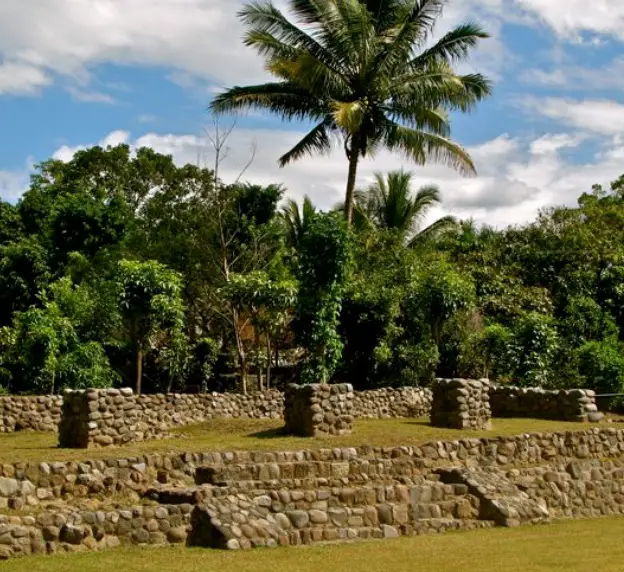 for a while, but by the late 1300s the city was in severe decline and may have been taken over by more local peoples such as the Tecos or maybe even the Tarascans, also known as the Purépecha people. The city probably existed in some form for a few more generations before becoming abandoned, with a tiny population of squatters living there by the time the Spanish arrived under the leadership of the tall, blond-bearded Gonzalo de Sandoval. As briefly mentioned earlier, the site was heavily looted in the late 19th and early 20th Centuries, most likely by people trafficking in the highly desirable west Mexican clay figurines of people and animals, especially dogs, that were sold in the collectibles markets as far away as the United States, Europe, and Japan.
for a while, but by the late 1300s the city was in severe decline and may have been taken over by more local peoples such as the Tecos or maybe even the Tarascans, also known as the Purépecha people. The city probably existed in some form for a few more generations before becoming abandoned, with a tiny population of squatters living there by the time the Spanish arrived under the leadership of the tall, blond-bearded Gonzalo de Sandoval. As briefly mentioned earlier, the site was heavily looted in the late 19th and early 20th Centuries, most likely by people trafficking in the highly desirable west Mexican clay figurines of people and animals, especially dogs, that were sold in the collectibles markets as far away as the United States, Europe, and Japan.
What does El Chanal look like to the modern-day visitor? The part of the site open to tourists and thoroughly excavated contains many different temples and plazas, a large ball court, other civic-ceremonial buildings and substantial public open spaces that have been described by some archaeologists as “grandiose.” No one has done a formal archaeological survey to include estimates of population at the site, but the large open spaces used for ceremonial activities and for commerce – in the form of great marketplaces – would lead one to believe that El Chanal had tens of thousands of inhabitants some 800 to 1000 years ago. Like the pyramid here with 6 glyphs on 6 steps, the site of El Chanal has 6 main plazas. Two of the plazas are considered public and the rest were comprised of private residences, probably for the members of the nobility that ruled El Chanal during its various phases. One of the public plazas at El Chanal, and the largest of all the open spaces at the site is the Plaza del Día y de la Noche. In English, this translates to “The Plaza of Day and Night.” An archaeologist gave this plaza this poetic name because he believed that this open space, delineated by a large retaining wall in its southern perimeter, was a congregation spot for pilgrims where rituals were observed to mark the rising and the setting of the sun. In this space, archaeologists have unearthed many small clay copal incense burners called sahumerios most likely used by participants in mass religious observances.
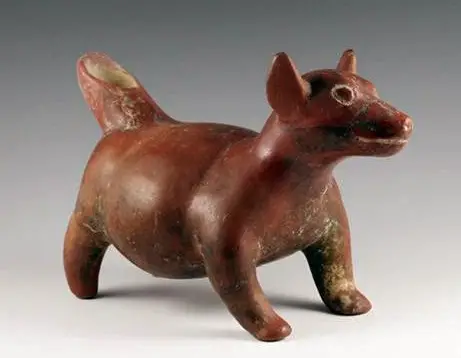 To the southwest of the Plaza del Día y de la Noche is the main ballcourt of El Chanal. This large court was constructed around 1200 AD and contains imagery from central Mexico on some of the stones used to build it, including carvings of what has been interpreted by archaeologists to be images of the god Xolotl. Xolotl accompanied the sun during its journey through the underworld and announced a coming dawn by illuminating the planet Venus in the early morning sky. He is sometimes referred to as a brother of the great Mesoamerican god Quetzalcoatl, or an aspect of that god. Xolotl is depicted as having a face of a dog and was seen as a guide of the dead, while also being the patron of human deformities, strange earthly creatures, and sickness in general. Many archaeologists believe that the ball court at El Chanal was dedicated to this imported god from central Mexico. Some researchers have tied the numerous dog figures unearthed at El Chanal to the god Xolotl, although these figures appeared in the archaeological record at the site, albeit in different styles, long before the supposed Toltec influence at El Chanal.
To the southwest of the Plaza del Día y de la Noche is the main ballcourt of El Chanal. This large court was constructed around 1200 AD and contains imagery from central Mexico on some of the stones used to build it, including carvings of what has been interpreted by archaeologists to be images of the god Xolotl. Xolotl accompanied the sun during its journey through the underworld and announced a coming dawn by illuminating the planet Venus in the early morning sky. He is sometimes referred to as a brother of the great Mesoamerican god Quetzalcoatl, or an aspect of that god. Xolotl is depicted as having a face of a dog and was seen as a guide of the dead, while also being the patron of human deformities, strange earthly creatures, and sickness in general. Many archaeologists believe that the ball court at El Chanal was dedicated to this imported god from central Mexico. Some researchers have tied the numerous dog figures unearthed at El Chanal to the god Xolotl, although these figures appeared in the archaeological record at the site, albeit in different styles, long before the supposed Toltec influence at El Chanal.
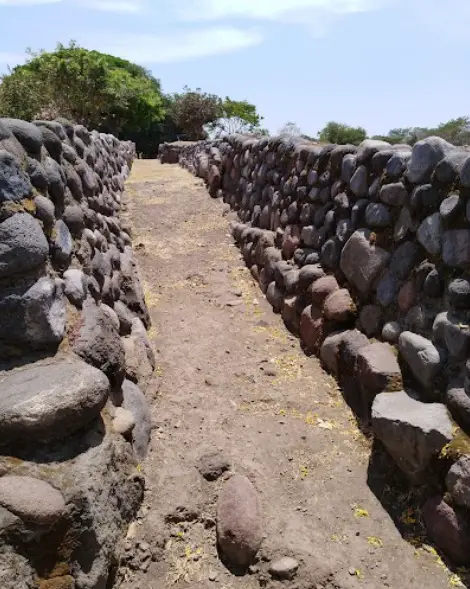 Directly north of the ballcourt is what modern Mexicans call La Plaza del Tiempo, or the “Time Plaza.” Some impressive buildings are located here, including Structure 1 and Structure 2. These were most likely temples, whose foundations and platforms survive today in differing states of ruin. These temple platforms were most likely topped with wooden structures with thatched roofs, a common type of construction as seen in central Mexico. Although La Plaza del Tiempo is another romantic name given to a feature at El Chanal, there is no evidence in this plaza that there was anything going on here connected to the marking of time or the Mesoamerican calendar. In fact, in the entire site of El Chanal there is no evidence of the ancient Mexican calendar or hieroglyphic writing of any kind. There are many pictograms featuring animals, people, and gods, but no evidence of a formal writing system.
Directly north of the ballcourt is what modern Mexicans call La Plaza del Tiempo, or the “Time Plaza.” Some impressive buildings are located here, including Structure 1 and Structure 2. These were most likely temples, whose foundations and platforms survive today in differing states of ruin. These temple platforms were most likely topped with wooden structures with thatched roofs, a common type of construction as seen in central Mexico. Although La Plaza del Tiempo is another romantic name given to a feature at El Chanal, there is no evidence in this plaza that there was anything going on here connected to the marking of time or the Mesoamerican calendar. In fact, in the entire site of El Chanal there is no evidence of the ancient Mexican calendar or hieroglyphic writing of any kind. There are many pictograms featuring animals, people, and gods, but no evidence of a formal writing system.
The Altars Plaza contains two very large altars, one rectangular and one rounded. Researchers believe that the rounded altar may have been dedicated to the powerful Mesoamerican deity or supernatural force called Ehécatl. Often associated with Quetzalcoatl, Ehécatl was considered the divine essence of the wind. Rounded or curved structures throughout ancient Mexico are often attributed to Ehécatl, and given other imagery of this god force at El Chanal, the assumption that this rounded altar is devoted to Ehécatl is probably quite accurate. No one has put forth a theory as to the function of the rectangular altar at the Altars Plaza. Perhaps it could have been used to honor Tlaloc, the rain and water deity, because Tlaloc symbolism is found throughout El Chanal. Maybe it served an altogether different function.
Other less “grandiose” structures at El Chanal include the Patio Alto which contained apartment-like dwellings for the elites, and the Plaza del Agua, or “Water Plaza” which includes a series of low platforms with inner patios, walkways and open plazas. Another plaza called Plaza del Altar is rounded and is located above the Altars Plaza and the Plaza del Tiempo.
Like so many other archaeological sites in Mexico, most of the site of El Chanal has yet to be explored. Although sacked by looters, cannibalized for construction materials and ravaged by time itself, there are many things left to be discovered at this lost city of the water elves.
REFERENCES
INAH website
